How to Transport a Paddle Board Without a Roof Rack or Even a Car!
Are you thinking of buying a SUP but aren't sure how to transport a paddle board without a roof rack or a car? Don't let this stop you as there are many ways to get your SUP down to the water. I speak from years of experience as a paddler without a car. When I started paddleboarding, I was passionate about the sport (still am!) but didn't own a vehicle. However, I didn't let that stop me from buying a board and getting out on the water as much as possible. Read on to find out how you can SUP without a roof rack or even a car!
Choose the Right Board
The first board I bought when I started paddleboarding was an inflatable. This was out of pure necessity. I didn't have a car or storage space, and I didn't live near the water. A hardboard was out of the question. My friend was selling his iSUP that came with a wheeled backpack (similar to our Roller Backpack). It turned out to be the best choice! I used that board for years, taking it to the lakes and rivers year-round without ever owning a vehicle or using a roof rack. Even though I bought a minivan a couple of years ago, I've spent the majority of my SUP career car-less. The only way I could accomplish this is with an inflatable SUP.
If you are going to SUP without having a roof rack or a car, an inflatable is your best bet. An iSUP allows for so many options for transport; you can carry it deflated in the roller backpack or opt to transport it fully inflated. It can fit in small spaces, whether you are taking it on a bus, bike, taxi, or train (or even a plane!). The choice is yours!

With your SUP in your Roller Backpack, you can go almost anywhere!
Become a Packing Pro
The most important skill in learning how to transport a paddle board without a roof rack or car is correctly packing your board. It was a challenge for me the first few times. In hindsight, I should have practiced at home before taking my board out. Without the convenience of a car, this skill becomes more crucial as you need to get all your gear zipped up in the bag.
Set up your bag fully open nearby to make it easier to pop the board in. Have the compression strap at the ready. Start rolling from the nose and make your way to the tail where the valve is located, which will push any remaining air out of the board. If you have a Thurso Surf pump, it can be used to deflate too. That'll make squeezing the last bit of air out much easier. Roll your board tight and use the compression strap to make it as compact as possible. Load the board into the bag and secure it using the internal straps. This will ensure that your board stays in place, minimizing any shift in weight.
Next, add your paddle, pump, leash and fins. If you do this right, you'll have a bit of extra room for other gear, like a dry bag, water bottle, and towel. I like to keep the front pocket for the fins, pump hose, and smaller non-SUP items, such as my wallet, phone, and sunscreen.
Carry Your Board the Right Way
Once your board is packed away, it's time to transport it. Our Roller Backpack can be used as a wheeled bag or a backpack. When wheeling the bag, tuck away any loose straps so they don't drag on the ground. If you're carrying your bag on your back, be sure to clip on the waist belt and take advantage of the hip pads for better posture and weight distribution. Check out our short instruction how-to video below.
You can also carry your board fully inflated. This allows you to leave the pump and bag at home. Although without a roof rack, your options are limited, you can carry an inflated board on a bike or while walking. There are some great accessories to make this happen. I'll get more into that later.
Pick Your Mode of Transportation
There are so many ways to transport your inflatable board without a roof rack or a car. I've tried them all! Each has their pluses and minuses, based on convenience, cost, schedule, and availability. I've listed them here from four wheels to two wheels to no wheels! Pick the one that works best for you.
Vehicle Without a Roof Rack
This is the easiest. If you have a car without a roof rack, an iSUP is your best friend. Roll up your board, store it in your bag, pop it in the backseat or trunk, and voilà! Roof rack not needed. Even though my minivan came with a rack, I always opt to deflate my boards and store them in the vehicle. This is the safest way to transport your board.
Rental Car
Want the freedom of transporting your board in a vehicle without owning one? You can rent a vehicle or join a car share program. I did this for a few years and found it very convenient. Having a temporary set of wheels can allow you to explore new waterways on your own time. Rental and car share companies don't usually have roof racks or even allow for items to be strapped to the roof, so an iSUP is a must-have. Also, remember that vehicles should be returned in the same condition they were rented, or you might get dinged with a cleaning fee. Place towels on the seats and in the trunk to minimize dirt and debris, especially if you are going to a sandy area. Sand gets everywhere! Shake the towels out before you return the rental.
Taxi or Rideshare
If a rental car is out of your budget, why not try a taxi or a rideshare like Uber or Lift? They can pick you and your board up and take you to the exact spot you want to go to. An iSUP rolled up in its backpack will definitely fit in a trunk or backseat, as it's the same size as a large piece of luggage. If you're not sure, inquire with the cab or rideshare company before booking. Remember to tip generously if the driver assists you with your bag. I was once stranded with a flat bike tire as I was transporting my SUP back home. I called the cab company and they sent a vehicle large enough for me, my bike, and my SUP!

Carry your board in the backpack to your next adventure
Get a Ride
Ideally, you should always have a paddle buddy for safety. And if your paddle buddy has a car and space for an extra passenger and board, all the better! I have gotten a lift from many lovely people. The best way to keep this relationship going is to make it mutually beneficial. There are a few ways you can be the ideal passenger. Offer to meet them in an area that is convenient for them or on their way to the paddle location. I would sometimes take my gear on transit to meet my ride at a subway station. Offer gas money and bring snacks to share. Car ownership isn't cheap, so kicking in a few bucks or some energy bars is always appreciated. Or if you stop at a coffee shop, pick up the tab as a thank you for their kindness. Also, minimize the amount of gear you are bringing and have it neatly stored away. Have a post-paddle plan to wipe down your gear before loading it back into the car to keep dirt to a minimum.
Public Transit
One of the most cost effective ways of getting around with your SUP is public transit. Most cities and towns offer some form of transit, whether it be a bus, streetcar, train, or subway (or all four, if you're lucky!). This can be a surprisingly great way to get down to the water. Public transit is usually designed to be accessible, so there are most likely elevators and/or escalators, making your journey that much easier. Just be prepared to carry your bag if the elevators or escalators are out-of-service. Fortunately, I've had a few kind strangers offer a helping hand as I've attempted to lug my bag up a flight of stairs.
Be sure to plan your route in advance and check the schedules so you don't get stuck waiting or worse, stranded with your board. I made that mistake once, not knowing that the bus was rerouted in the off-season. Whoops! Luckily, a friend came to rescue me.
Bicycle
This one requires a bit more planning and skill, but can be done! For a minimalist approach, you can cycle while wearing the backpack. However, it's important to make sure you have solid bike skills, are strong and balanced enough to carry the bag on your back, and feel safe and comfortable. The board should be strapped securely in the bag to avoid any shift in weight that could knock you off balance. Wear a helmet and do a few practice runs in a safe area before the actual journey.
Another option is to carry your board in a bike trailer. A trailer should have enough room for your backpack. I once used a second hand bike trailer designed to transport kids, which provided adequate room and had all the safety features. Alternatively, you can inflate your board and tow it behind your bike with a product like SUP Wheels. I haven't tried this yet but I have seen it in action.

The SUP Carrier and paddle holders make it a cinch to carry your board
Walk
If you are lucky enough to live within walking distance to the water, why not take a stroll with your SUP? It might seem daunting at first due to the weight, but there are ways to make it more doable. You can carry the bag on your back or wheel it down to the shoreline. Or you can pump it up at home and carry it fully inflated. There are some accessories that will make the journey easier. Strap your paddle to the board with the velcro paddle hooks that come on all our SUPs. Consider purchasing a SUP Carrier which clips into the D-rings and slings over your shoulder. The SUP Carrier can be used with almost any SUP from any brand, inflatable and not. The aforementioned SUP Wheels are also an alternative for those walking their inflated boards to the water.
Where to Stow Your Gear
If you choose to walk, bike, take transit or a taxi, you'll need to figure out what to do with your bag and pump while out on the water. If you're meeting a friend, you can ask to leave your stuff in their car. If this is not an option or if you're going solo, think ahead to where you feel most comfortable leaving your stuff. For a short excursion, you're probably ok to leave your bag on the beach or near the shoreline. I'll sometimes tuck it under a blanket or heavy rock for good measure, or place it in a less visible area, such as behind some trees or bushes. Just make sure to keep any valuables (keys, wallet, phone, etc) on you by stowing them in a small dry bag.
If you'd prefer something more secure, see if there are rental lockers available at your launch point, or lock your bag to a post (use a bike lock to do this). Another option would be to take your backpack and pump with you. Roll or fold your backpack with the pump inside, then tuck it under the bungees on your board. This can also fit inside a large dry bag if the conditions are choppy and you want to keep your gear dry.
Conclusion
No roof rack or no car doesn't have to equal no SUP! When there is a will, there's a way. Hopefully these tips have inspired you to get a SUP and get out there, car or no car. It takes a bit of planning, muscle and creativity, but it is worth it for the awesome feeling of being on your board out on the water.
How do you get your SUP to your favourite paddle spots? Let us know in the comments.


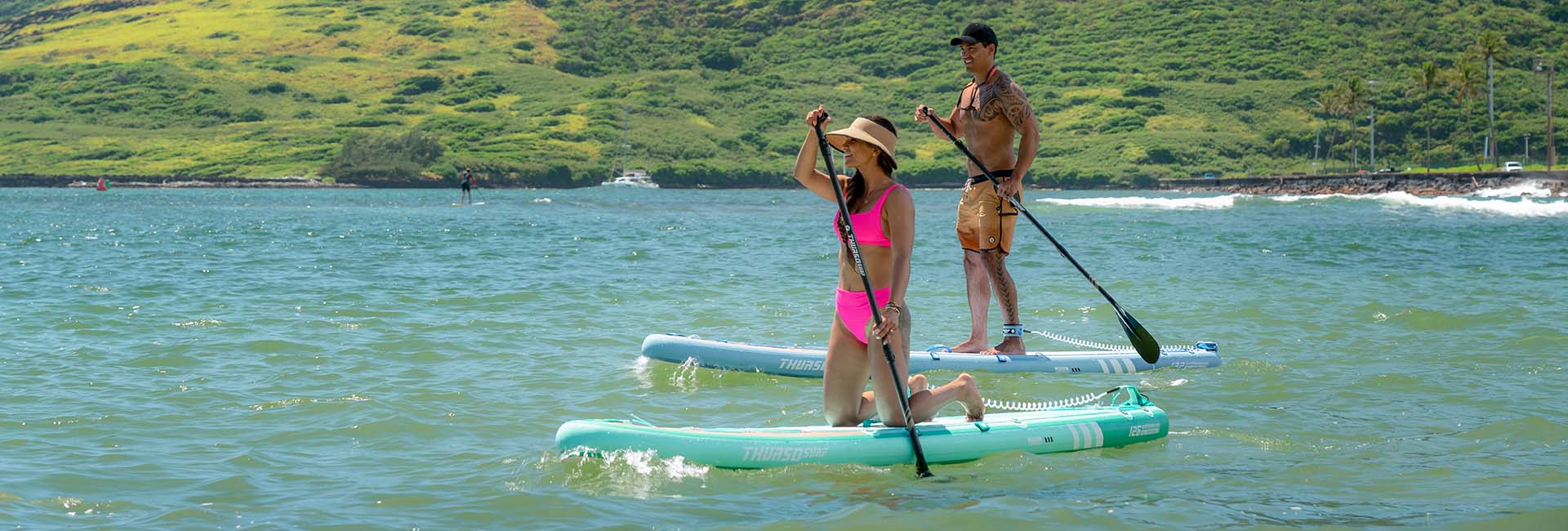
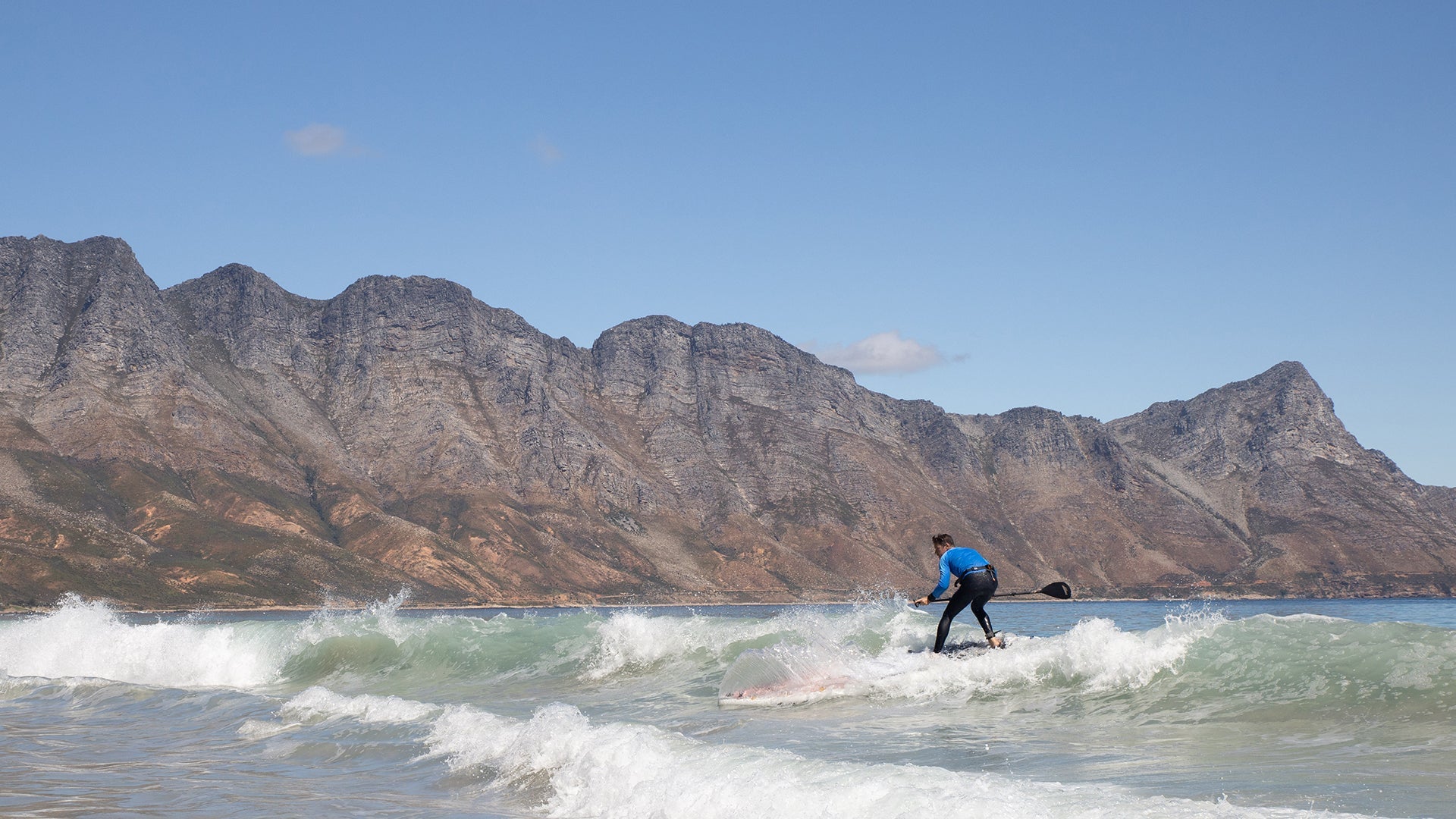
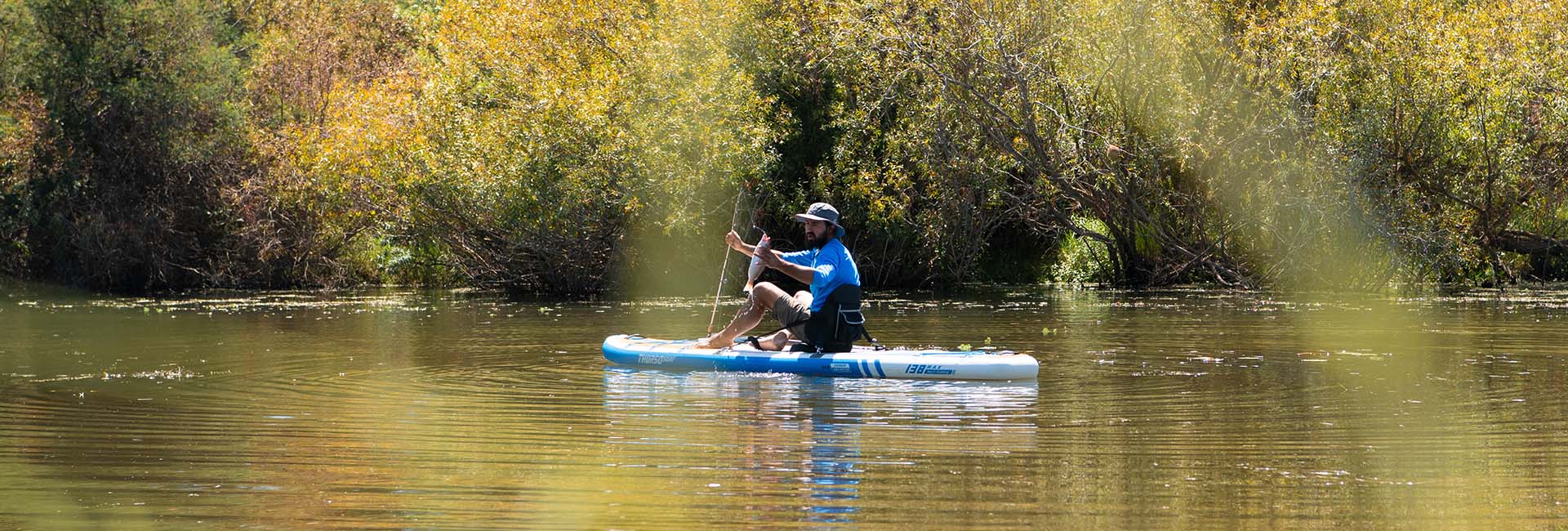
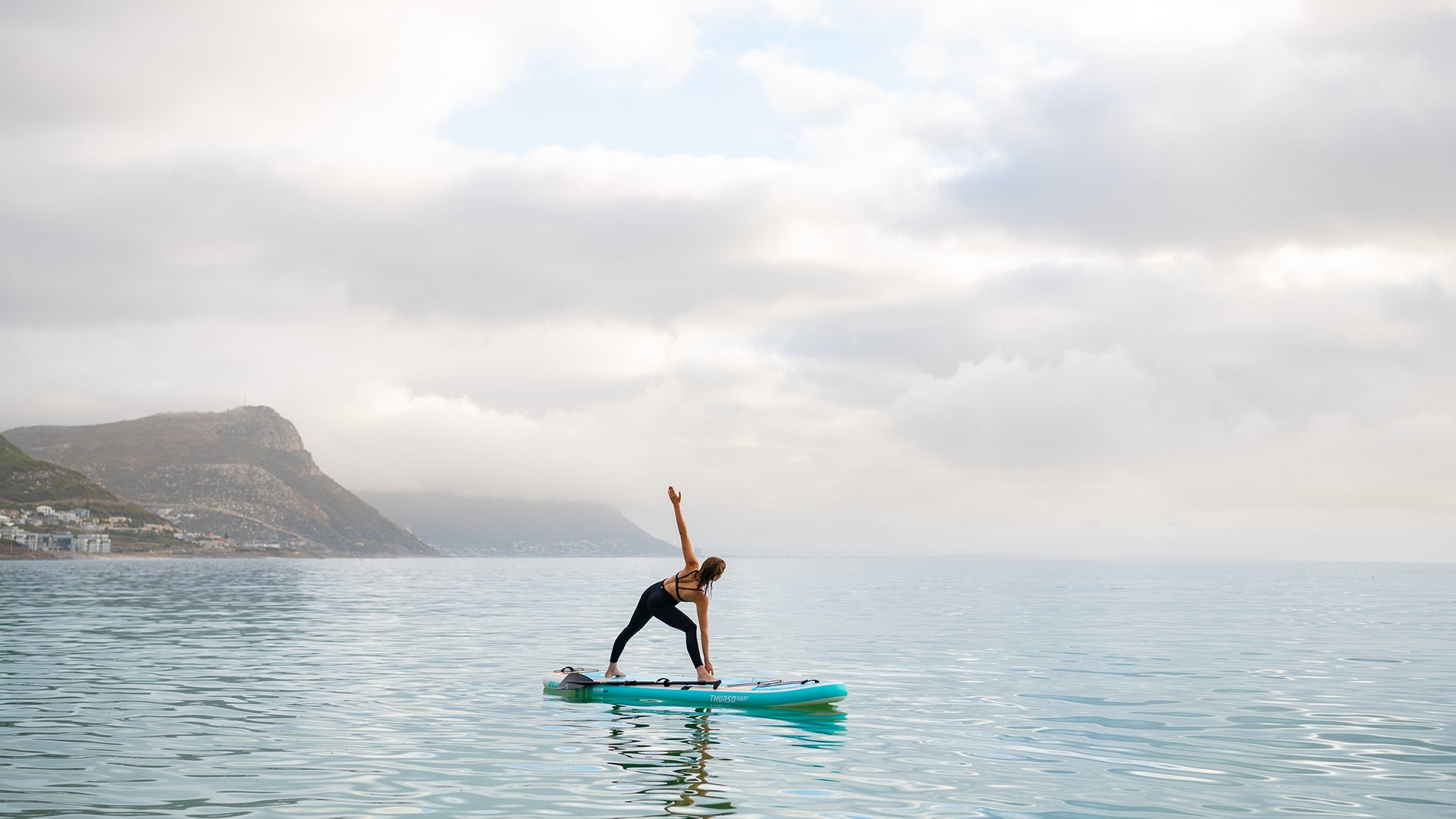
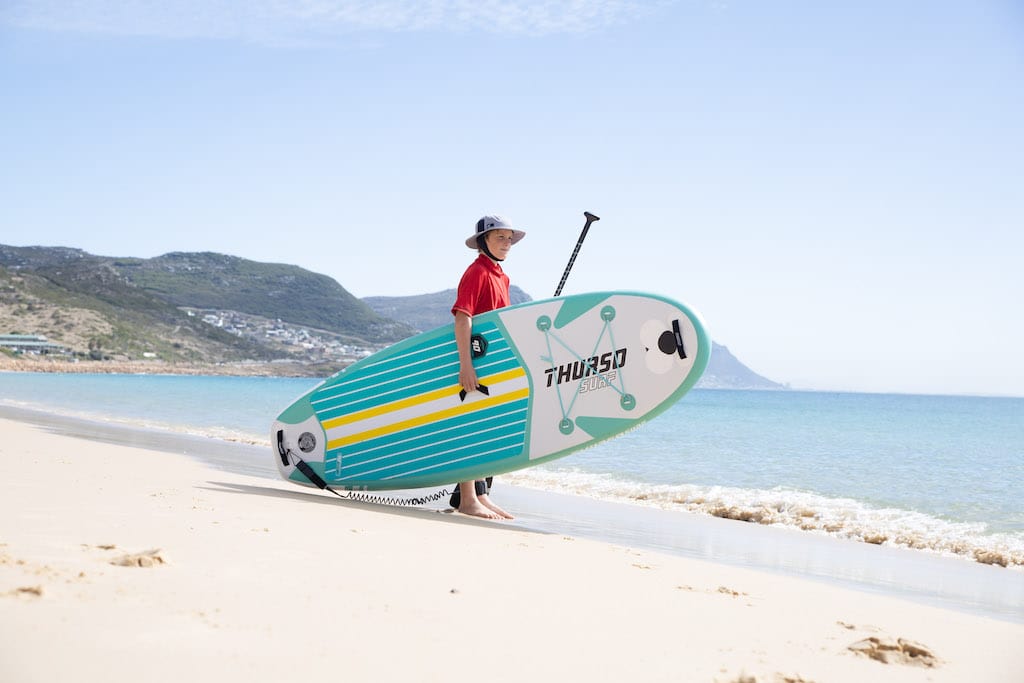
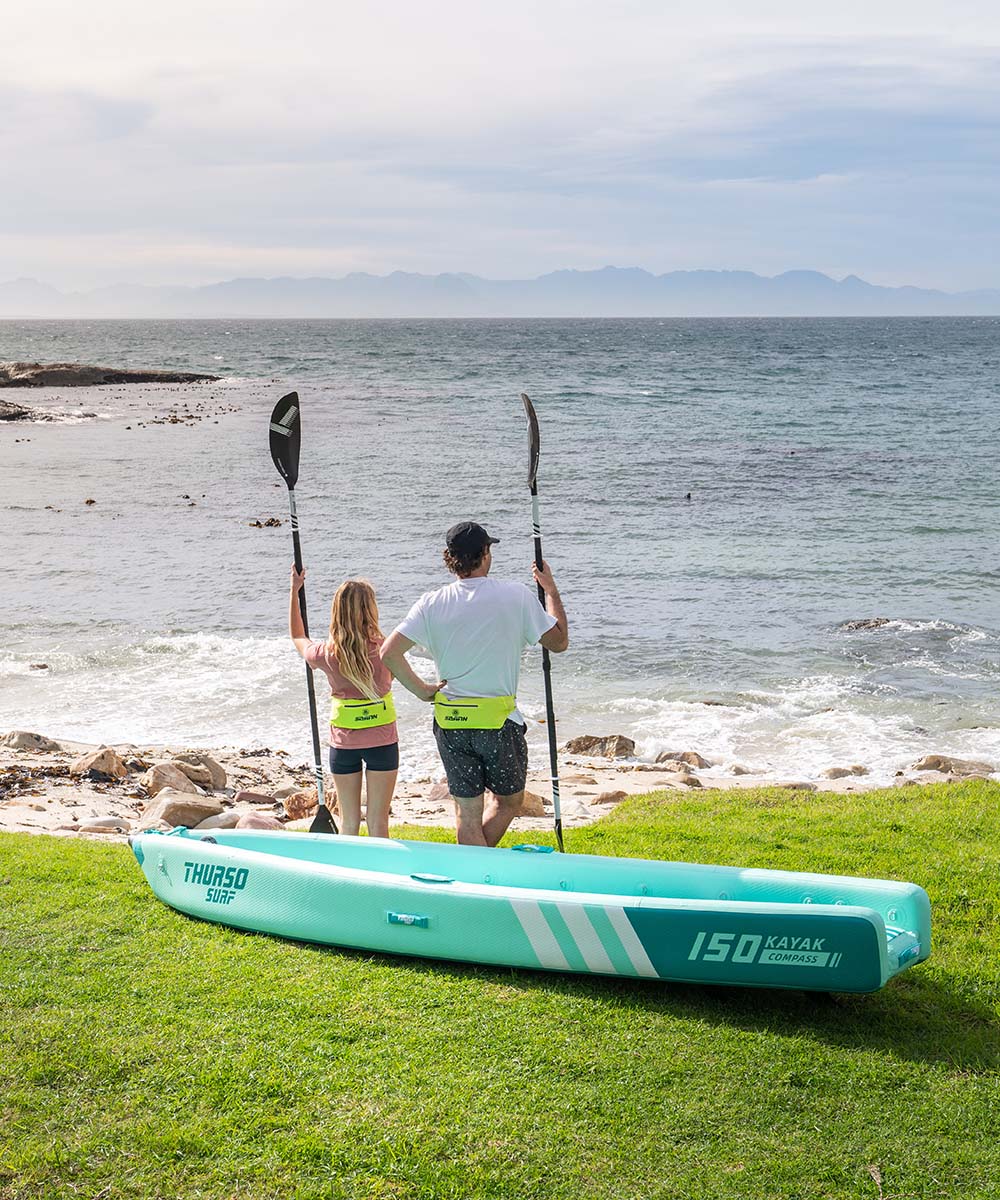
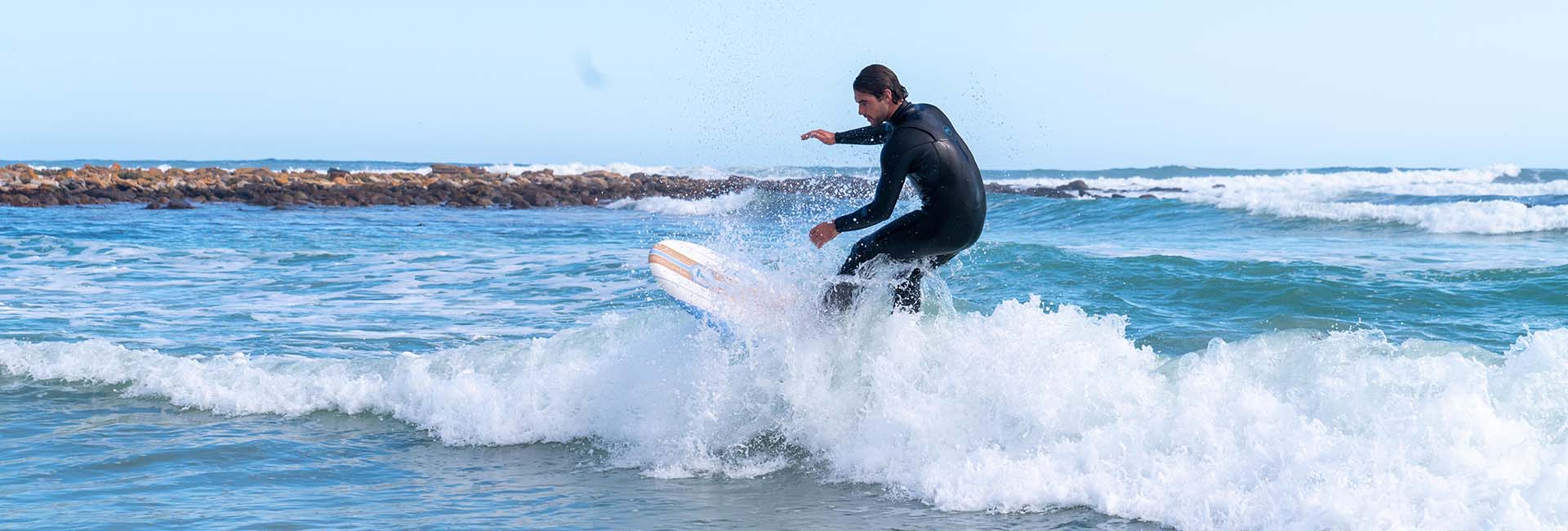
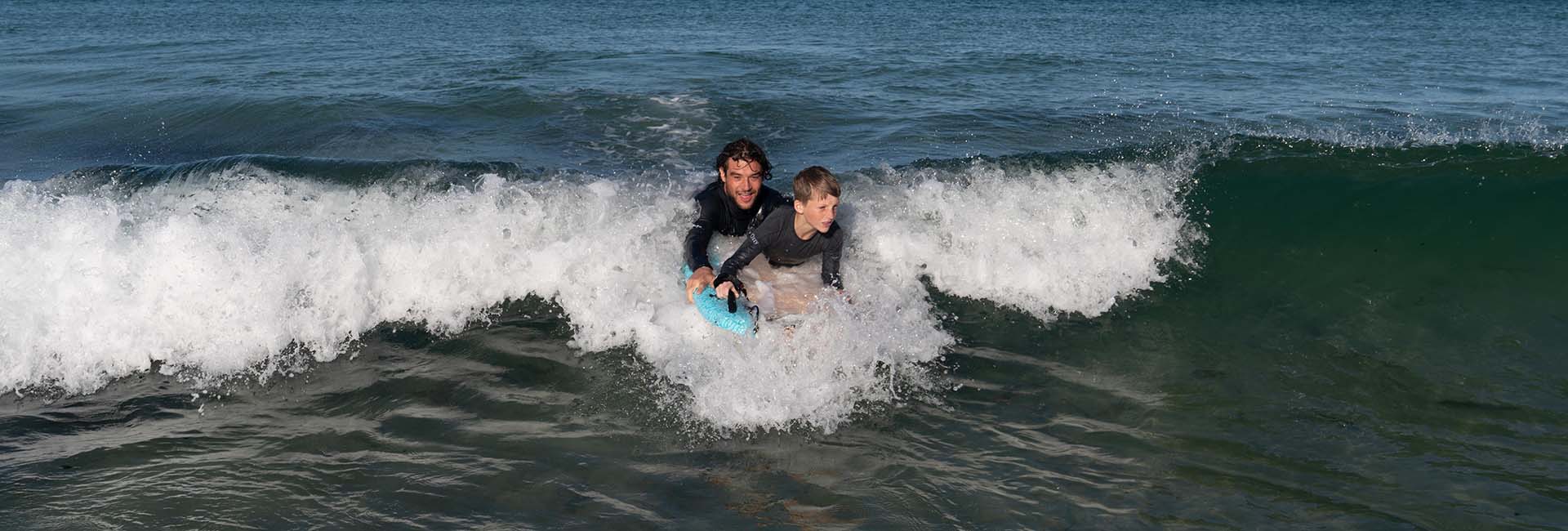
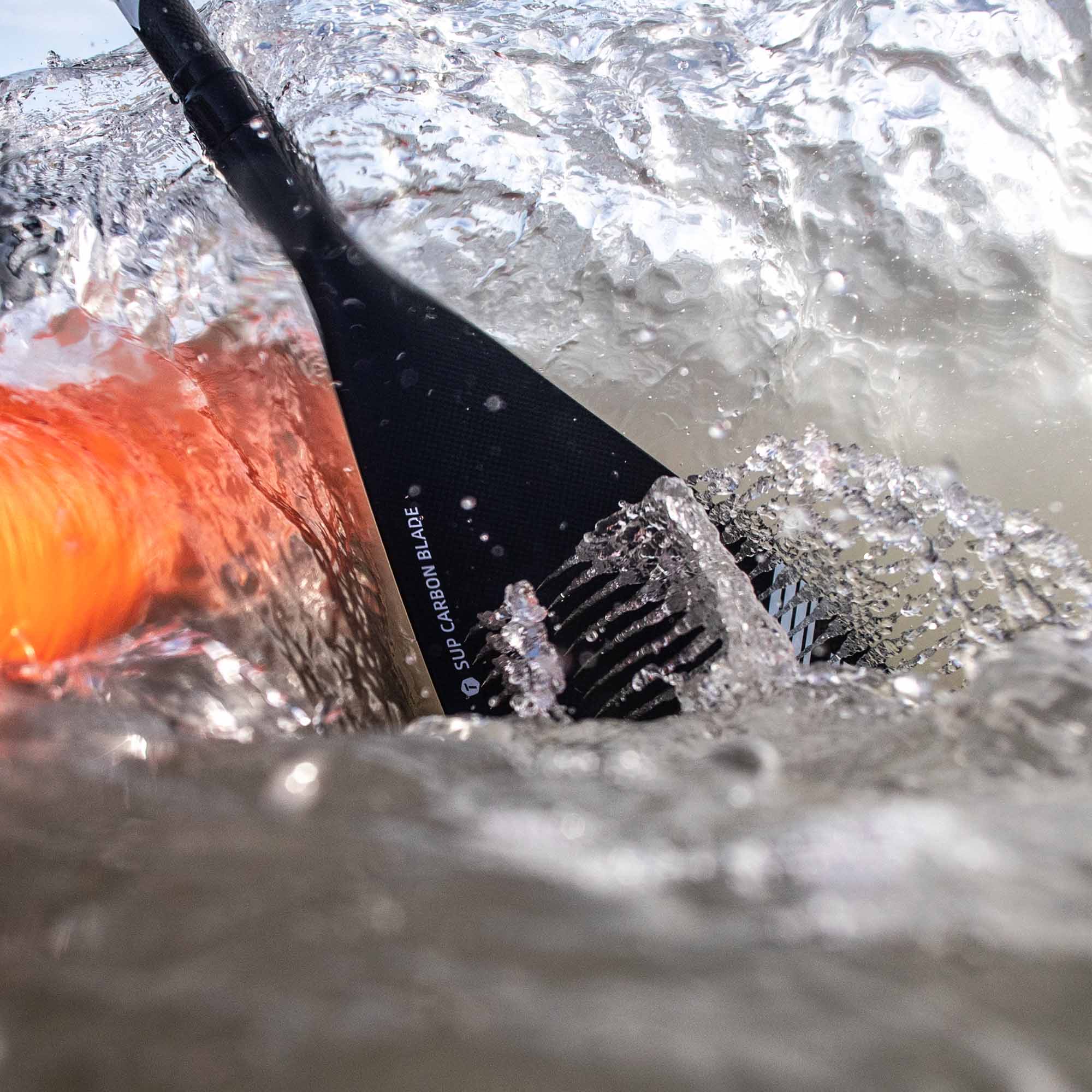
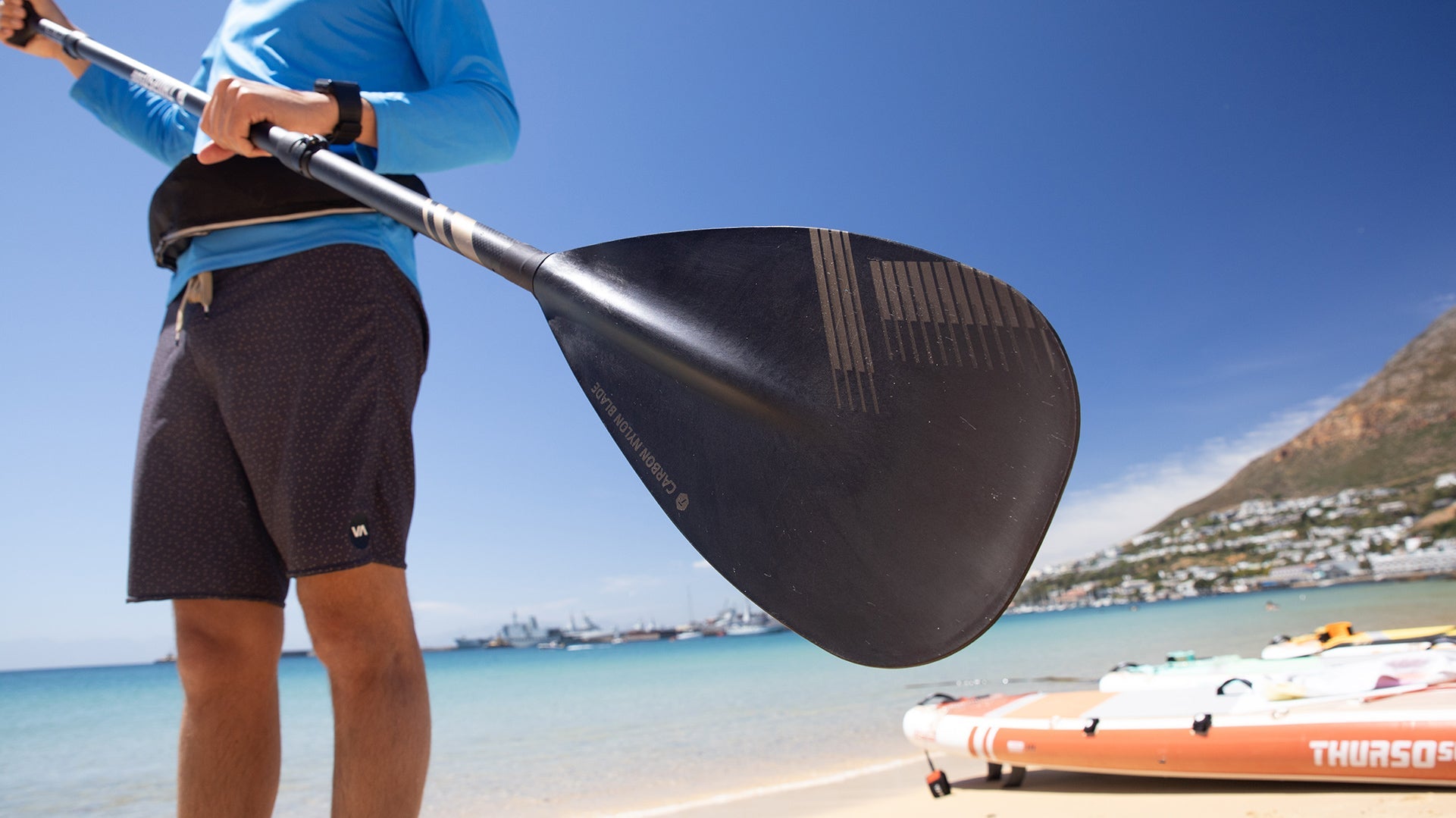
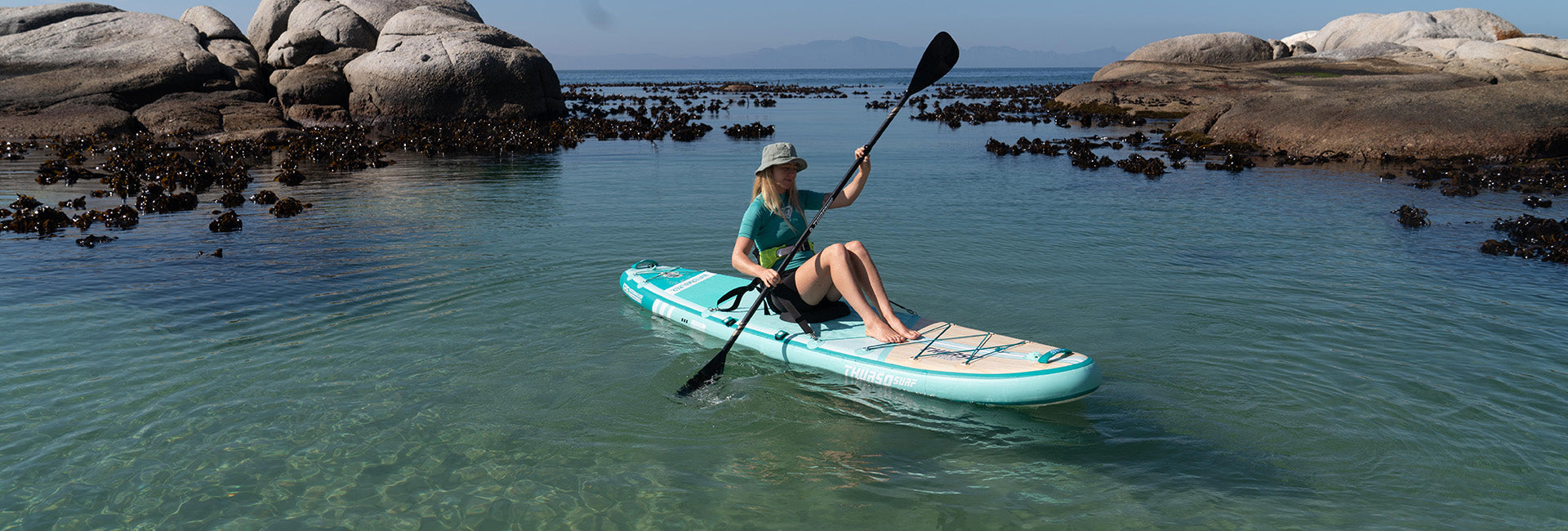

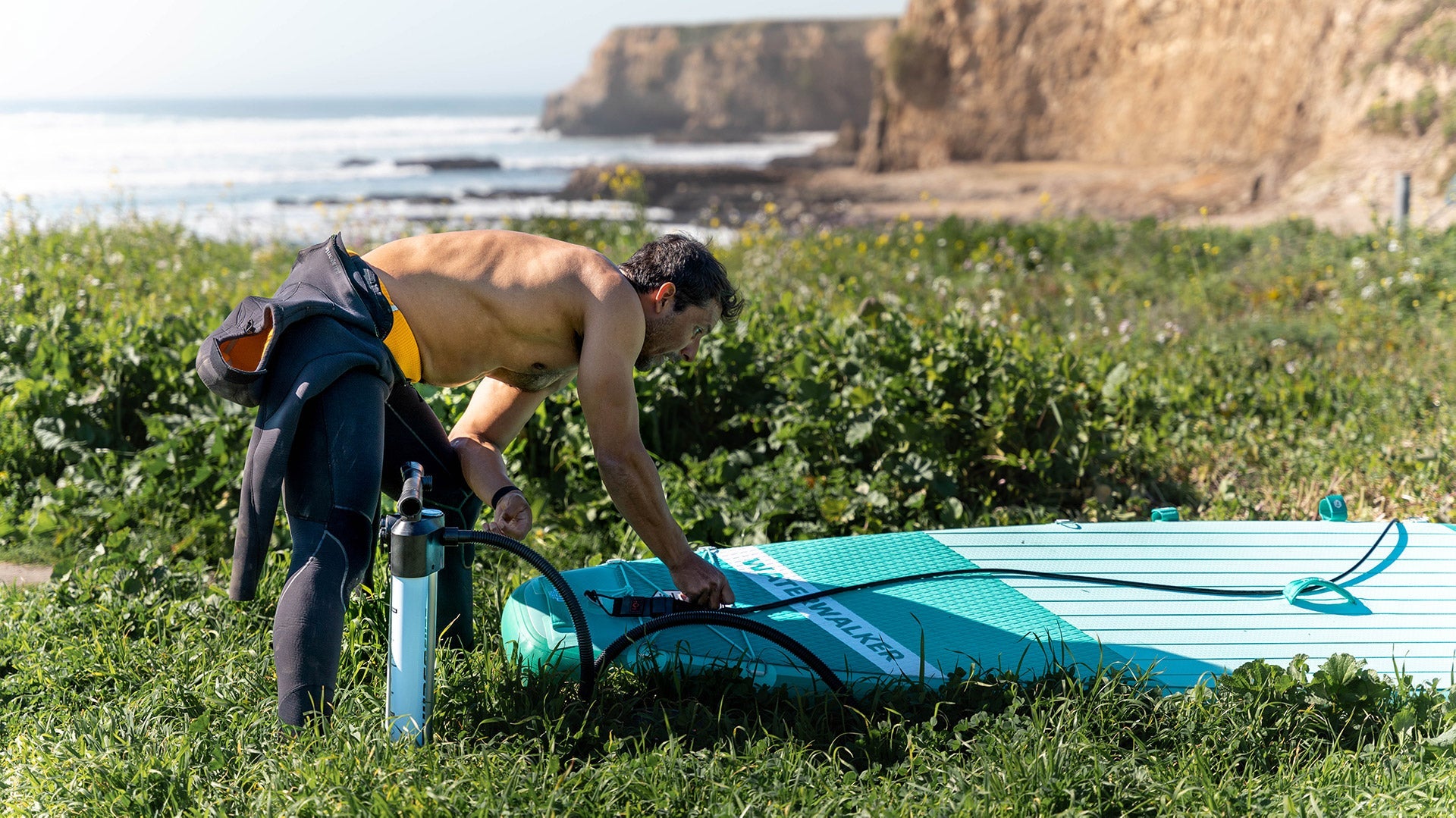
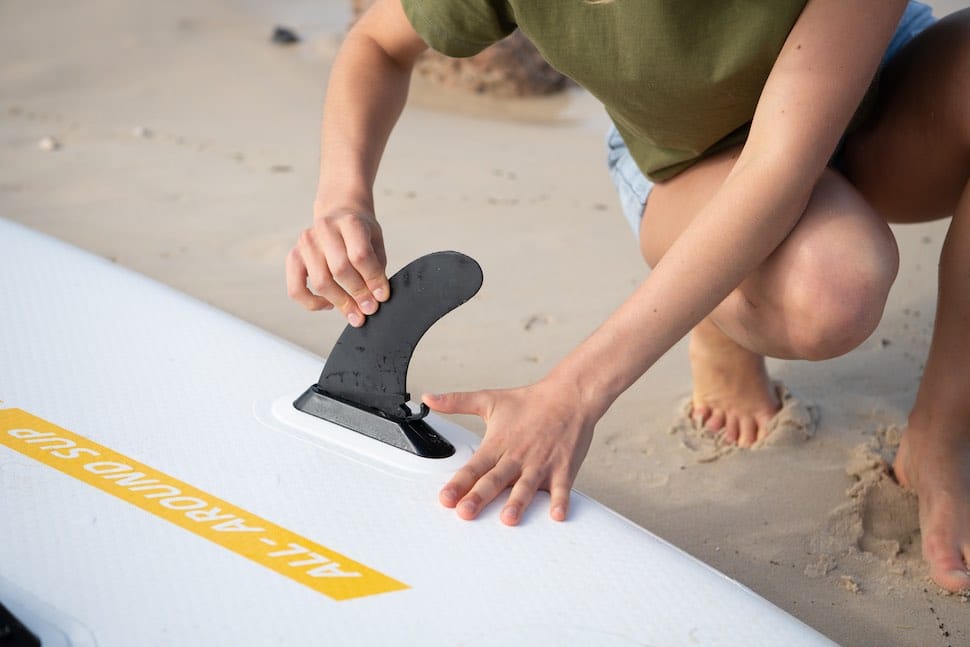
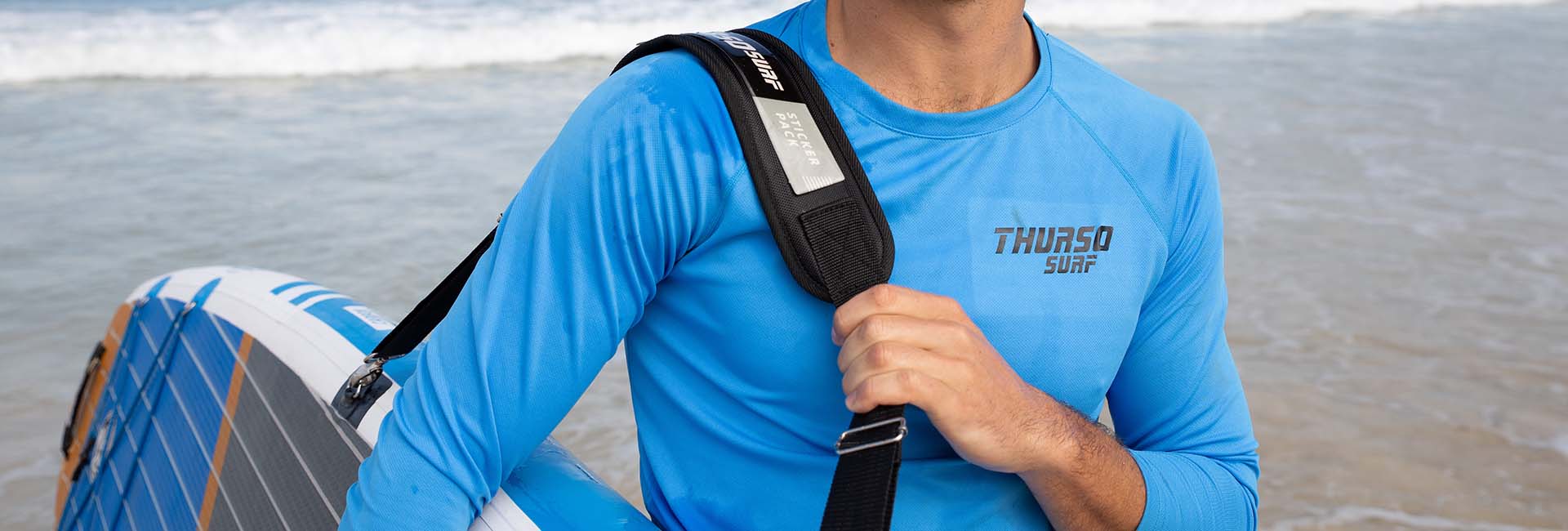



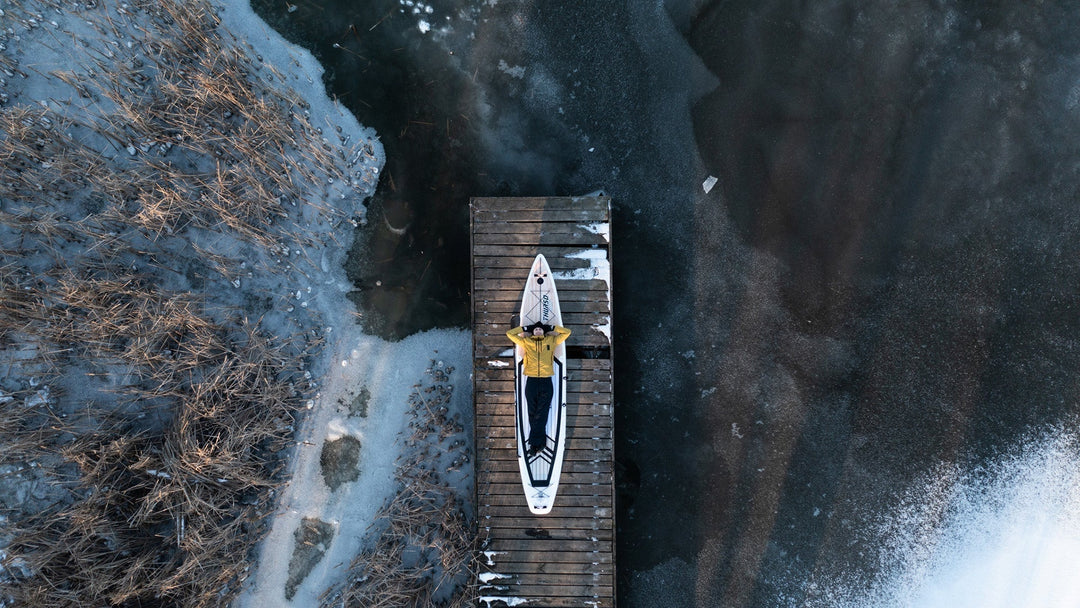
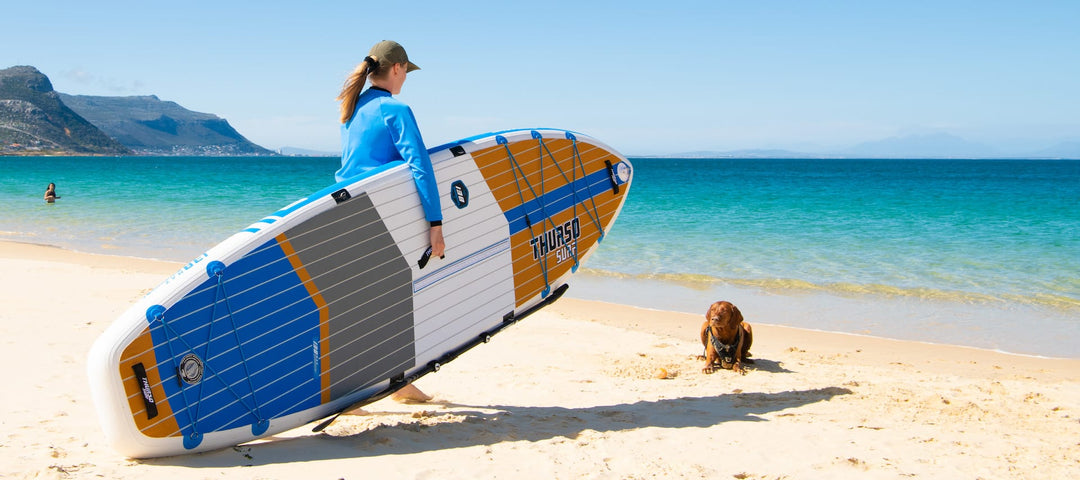
Leave a comment